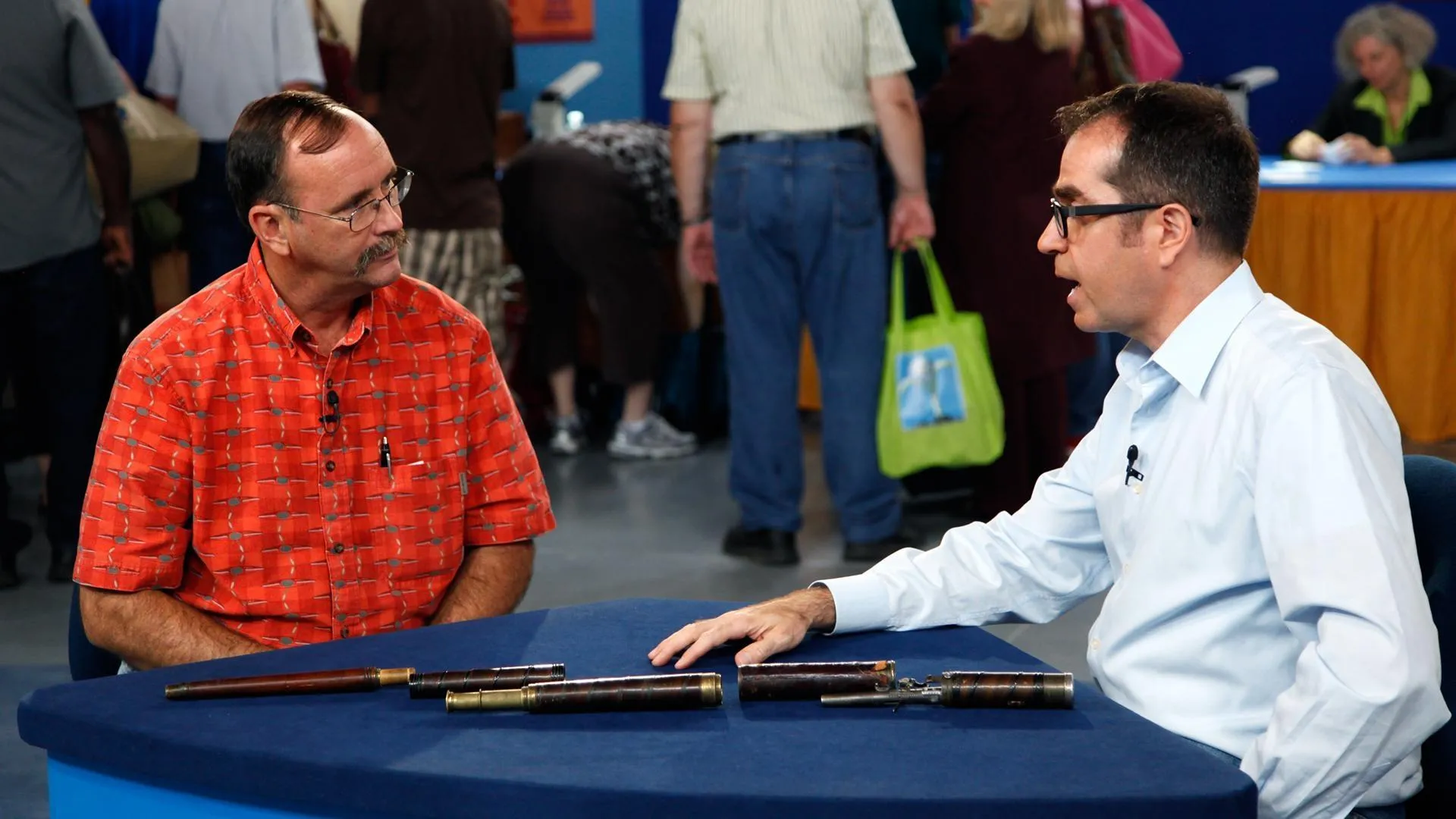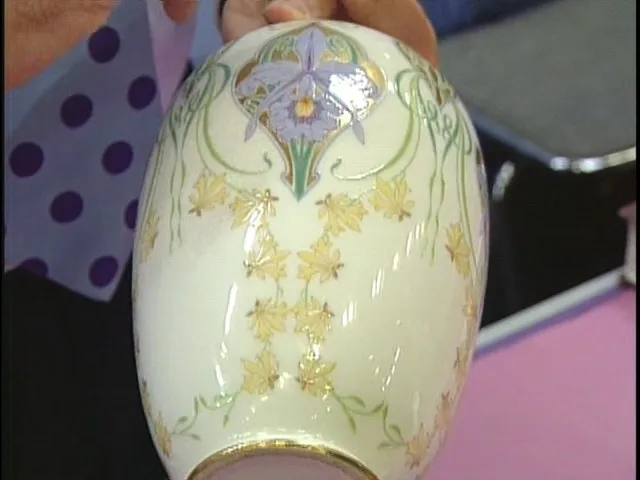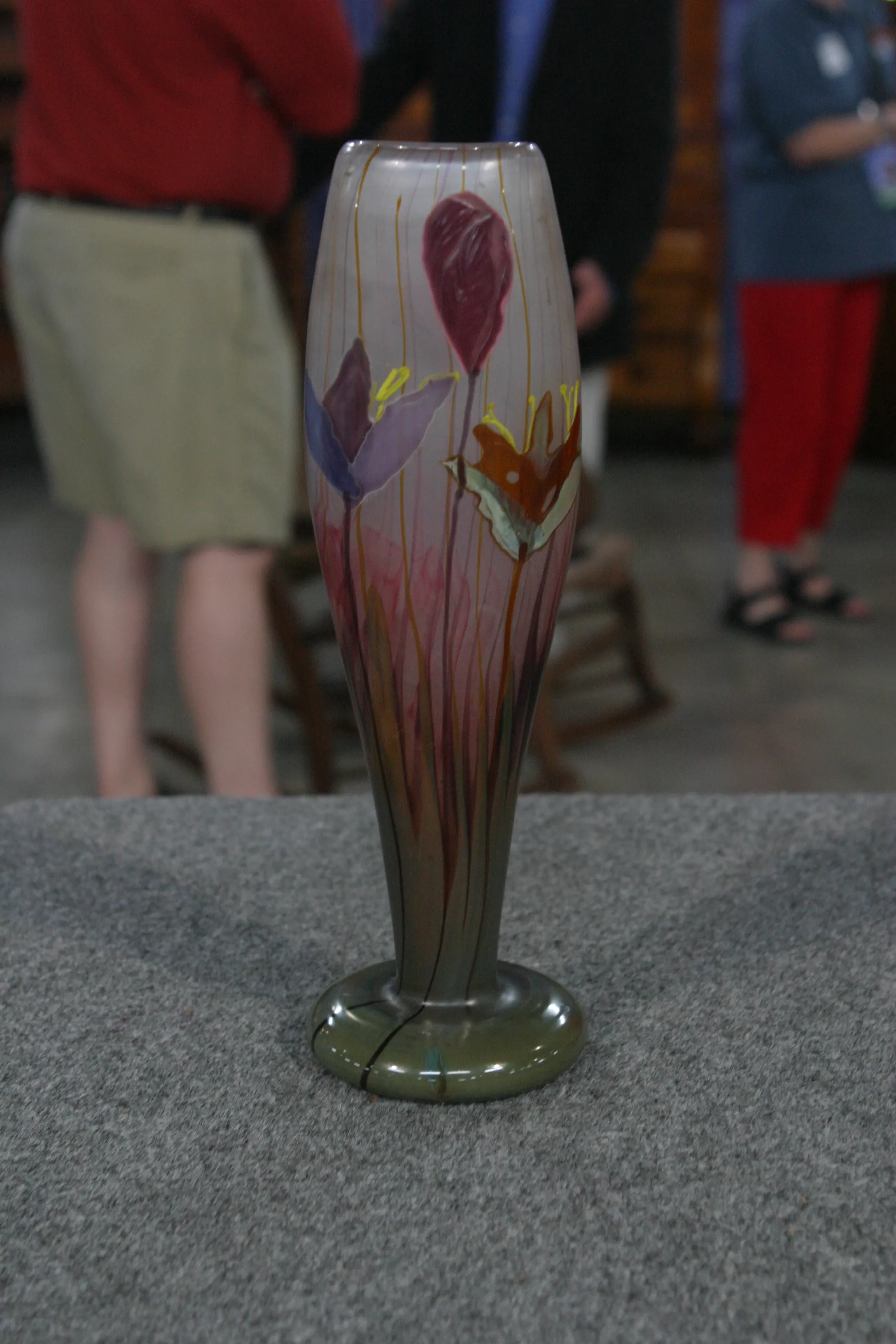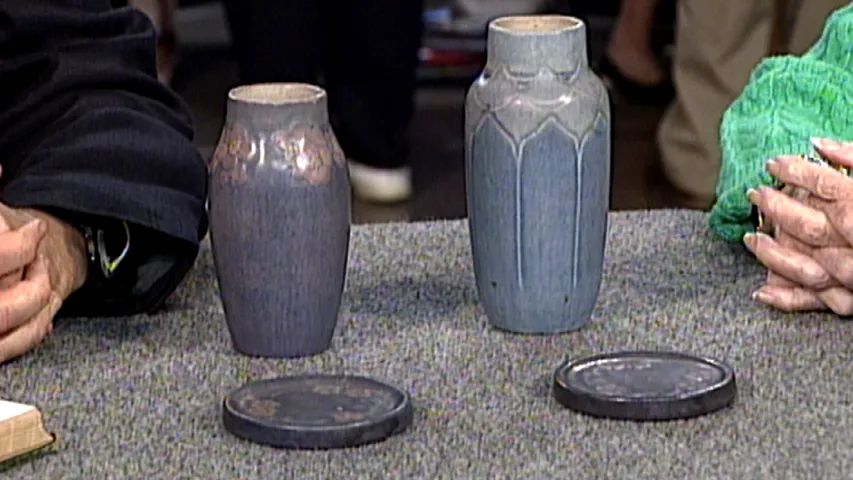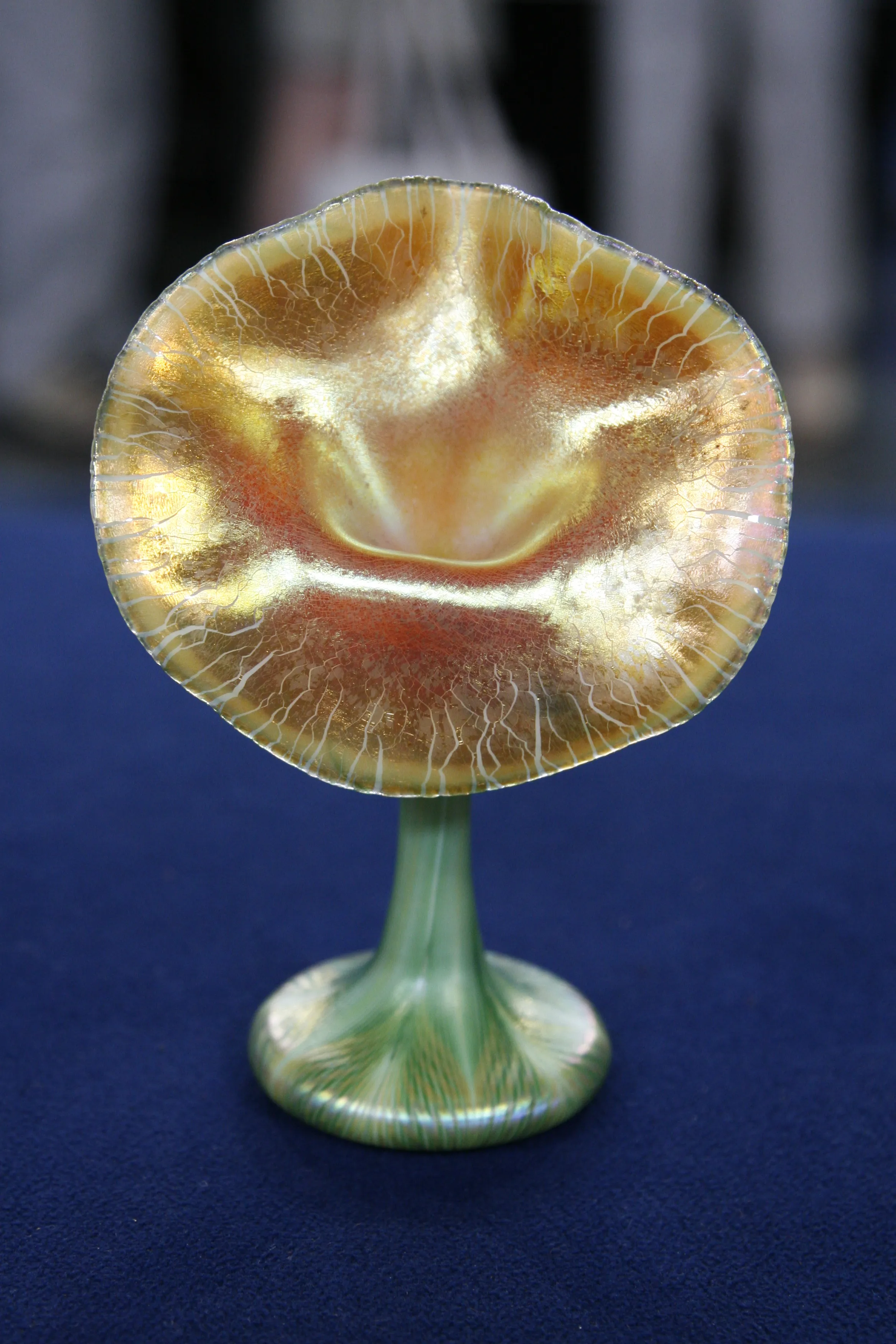APPRAISER: What have you brought with you?
GUEST: A Lalique vase.
APPRAISER: Where did you get it?
GUEST: We got it from a friend. It was a friend who passed away, unfortunately, in 1980 or so, and she went to New York City to model and missed her family, so she came back to Minneapolis to be with her family. And they were friends of the Kelloggs, and that was a gift to her from the Kelloggs.
APPRAISER: The Kellogg family, okay.
GUEST: Uh-huh, in Minneapolis.
APPRAISER: Well, this is a Lalique vase. If we tip this up here, we have a signature, "R. Lalique." And then we have some factory numbers here. And this vase is known as Espalion. It was first produced in 1927, or executed in 1927. The blue color is very nice. This frosting is original to the piece. Rene Lalique, of course, born in 1860. By 1900, he was one of the most celebrated jewelry makers in the world, and by the '20s, he was one of the most celebrated glass makers in the world.
GUEST: Okay.
APPRAISER: So we have a very pretty vase, a fern pattern in a nice color. Now, my colleagues and I have looked at this, and there is some question as to whether or not the rim here has been buffed at all, cleaned down to maybe get rid of some chips or something like that. That is a question.
GUEST: Obviously I do not have any knowledge of that.
APPRAISER: Yeah, okay. This vase in blue has sold, at auction, as much as $5,000.
GUEST: Really?
APPRAISER: Okay. However, if in fact the rim has been buffed a little bit, that would diminish the value. In order to ascertain whether it had been buffed, I'd want to check it against the catalog raisonne of Lalique's work to see how heavy that lip was and... or if it's diminished. If it has been diminished, that would diminish the value by at least half.
GUEST: Uh-huh.
